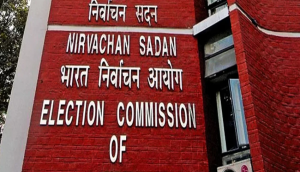One rank one pension: mind the bill

Pension pain
- The govt was once faced with a huge pension liability
- The National Pension System (NPS) started in 2004 for new civil servants
- NPS was to cover the Army as well, but that initiative never materialised
Wage-linked benefit
- High GDP growth eats into the value of current pensions
- Ex-servicemen now want one-rank-one-pension
- Linking pension with wages will mean a higher pension bill
- Early retirements in Army will add to the cost
In 2004, India was staring at a pension bill so bloated that the government had to start the National Pension System (NPS) for newly recruited civil servants. By one estimate, the implicit pension debt - unfunded pension liabilities on account of civil servants alone - was 64.5% of the country's gross domestic produce.
The NPS was to cover the Army as well, but that did not happen. Rather, the debate has shifted back by decades and we are now discussing one-rank-one-pension (OROP) for the forces, on top of the traditional defined benefit pension.
So, why are the forces clamouring for OROP?
Because a high GDP growth rate can introduce glaring gaps in pensions not indexed to wages.
Let's take an example of employee who retires at 60: His pension would be half of what he earned at 59. That pension would remain the same (or rise a bit to keep up with inflation) even when he turns 70.
Meanwhile, the salary would have almost doubled for someone retiring at that time and that would reflect on the pension as well. This way, the former pensioner would have lost ground compared with the recently retired. This is true for everyone in India.
Anyone working between 1980 and 2020 and building up wealth will seem relatively prosperous in 2021. But the same person will look less prosperous in 2031 and even less in 2041.
That's the inexorable logic of high GDP growth.
The armed forces wanted to get around this by asking for pensions indexed to wages, where increments would help not only current employees, but every single pensioner.
Suppose a jawan retires in 2015 and starts drawing a pension of Rs 5,000, and another retires in 2025 but gets Rs 10,000. If pensions get linked to wages, then the jawan retiring in 2015 would also receive Rs 10,000. What's the problem with that?
The expense.
To key to understanding pension costs lie in understanding annuities. If you want to buy an annuity of Re 1 per day (or Rs 30 a month), the price would be about Rs 3,500 at today's market rates.
So, if you want Rs 333 per day (Rs 10,000 per month), you will have to pay that much more - Rs 333x3,500 - or Rs 11,65,500 today.
A nominal annuity of Rs 10,000 per month to about 1 lakh pensioners will cost Rs 116.55 crore. Let's calculate the approximate cost of a nominal, inflation-indexed and wage-indexed pension for someone retiring at 60 and someone at 35 (as many in the armed forces retire early).
Using some assumptions on life expectancy and the discount rate, we found that at age 60:
- cost of a nominal annuity is Rs 3,163;
- inflation indexed at 4% inflation is Rs 4,270;
- and wage indexed at 8% wage growth is Rs 6,128
It's obvious that the cost of a wage-indexed pension far exceeds that of a nominal, inflation-indexed annuity. The figures are approximate and conservative.
One-rank-one-pension will benefit generations of retirees, but will increase the govt burden considerably
Those employed with the armed forces would likely be healthier than the average Indian and live longer, increasing the pension bill.
As life expectancy improves, even more will live longer. To know the actual cost of OROP, we need to know the number of current pensioners and their rank, the number of employees (and rank), and projections for life expectancy and wage growth. OROP will affect future wage increases as every hike will raise the the pension of all retirees, making it pay hikes difficult to afford for the government. The armed forces need to think the repercussions of high pension expenditure on wages.
It is also important to remember that pension expenditure may seem small as a proportion of total expenditure today. But on a horizon of 60 years, we would go through four cycles of taking in employees at 20 who will retire at 35 and live until 80 - for each serving employee, there will be four drawing pension.
These expenditures should be seen in the context of unfunded liabilities over the long term, which can become dangerously expensive.
Ultimately, whether to spend on pensions or to use that money on something else, such as upgrading the military or on development and infrastructure projects, is a political decision.
First published: 22 August 2015, 1:30 IST





![BJP's Kapil Mishra recreates Shankar Mahadevan’s ‘Breathless’ song to highlight Delhi pollution [WATCH] BJP's Kapil Mishra recreates Shankar Mahadevan’s ‘Breathless’ song to highlight Delhi pollution [WATCH]](https://images.catchnews.com/upload/2022/11/03/kapil-mishra_240884_300x172.png)

![Anupam Kher shares pictures of his toned body on 67th birthday [MUST SEE] Anupam Kher shares pictures of his toned body on 67th birthday [MUST SEE]](https://images.catchnews.com/upload/2022/03/07/Anupam_kher_231145_300x172.jpg)






